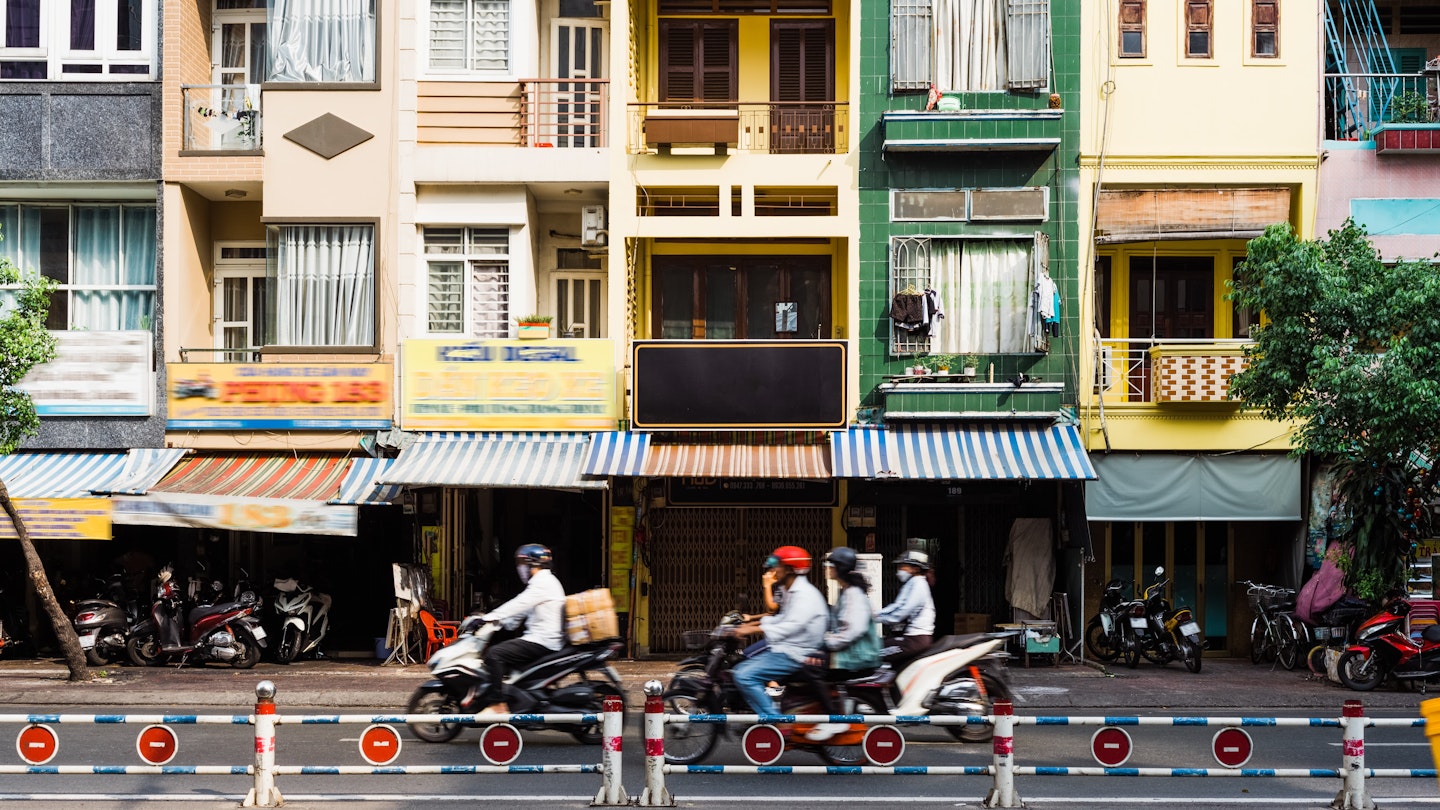Summary

Ho Chi Minh City (previously known as Saigon) stands out as one of Vietnam’s most dynamic and culturally enriched urban centers. The city is endowed with a tropical climate that encompasses two primary seasons—dry and wet—yet it experiences fewer extreme weather occurrences than other regions in the country, and potential storms are unlikely to interfere with travel itineraries.
Visitors can fully engage with the city’s cultural heritage, explore historic landmarks, and savor street food at any time of the year. However, the timing is a critical factor in optimizing your visit, ensuring that you can fully partake in specific activities on your agenda. Below are considerations for determining the most suitable period to travel to Ho Chi Minh City.

December to April: Ideal Weather and Excursions
The December to April duration is frequently regarded as the optimal time to travel to Ho Chi Minh City, denoting the peak dry season. In these months, the city encounters lower humidity levels, temperate conditions (averaging around 28°C/82°F), and scant rainfall, thus creating favorable circumstances for exploring attractions and enjoying the vibrant streets on foot and by motorbike, without the concern of unexpected downpours or excessive midday heat.
This is also the best time for excursions to the neighboring Mekong Delta or Cu Chi Tunnels. The rice fields in the Mekong Delta flourish during this period, presenting a picturesque landscape best appreciated on scenic boat rides, appealing to photography enthusiasts as well. The region surrounding Cu Chi is considerably more accessible during dry conditions, making navigation through some jungle terrain straightforward. Moreover, the cooler weather enhances comfort while exploring the narrow underground passageways.

Celebrate Tet (Vietnamese Lunar New Year) in January and February
During this period, Ho Chi Minh City is particularly vibrant as it embraces the festivities surrounding Tet, the Vietnamese Lunar New Year. Recognized as the nation’s most significant holiday, preparations for Tet begin in the last lunar month (typically at the end of January).
Restaurants and cafes exhibit remarkable creativity through innovative decorative themes, transforming their exteriors with traditional motifs such as apricot blossoms, firecrackers, red envelopes, and the zodiac animal of the year. Seasonal beverages appear on menus, heightening the festive atmosphere, and coffee shops serve as cultural meeting places throughout this time.
Exploring parks, popular tourist destinations, and pedestrian-friendly areas, including Tao Dan Park, Bach Dang Wharf Park, and Nguyen Hue Walking Street, becomes particularly enchanting as they host many city events. Colorful flowers bloom profusely, and the populace adorns their finest attire, radiating joy. Public spaces transform into picturesque landscapes. Although most museums remain closed during the initial three days of Tet, two historical landmarks—the War Remnants Museum and the Independence Palace—maintain accessibility.
Anticipate congested traffic leading up to New Year’s Eve as inhabitants travel to reconnect with family, a slight rise in service prices, and constricted business hours. Reservations are advisable to secure suitable accommodations at favorable rates during this interval.

April and September: Focus on Historical Sites
April is notably significant in Vietnamese history, especially in Ho Chi Minh City. The Fall of Saigon took place on April 30, 1975, signifying the conclusion of the Vietnam War and the nation’s reunification. September also holds great importance, with the country commemorating National Day on September 2. These occasions are celebrated each year through parades, exhibitions, and particular events centered on key historical sites.
There may be a more reflective atmosphere at Ho Chi Minh City’s landmarks during this period, inviting a deeper appreciation of the local history. Noteworthy attractions to visit in April and September include the Independence Palace, War Remnants Museum, Ho Chi Minh City Museum, and historic French architecture, such as the Opera House and the Central Post Office.

May to November: Budget Travel Advantages
The period from May to November is recognized as the rainy season in Ho Chi Minh City. A decrease in tourist volume engenders notable price reductions for accommodations, flights, and tours. Street vendors and market sellers may exhibit a greater predisposition towards negotiation, providing budget-conscious travelers enhanced opportunities to secure exceptional bargains on food, souvenirs, and local experiences.
Though the rainy season often features frequent showers, these typically last for short durations, mostly occurring during the late afternoon or early evening. Such downpours present a refreshing reprieve from the heat while also contributing to a purer environment, enabling visitors to continue their plans without significant disruptions. Therefore, enthusiasts can wisely utilize this period to discover indoor attractions such as museums and art galleries, unwind at a spa, or retreat to a cozy café, observing the city through a veil of rain.

August and September: Discover Cholon (Chinatown)
In August and September, Cholon (primarily located in District 5) along with its key attractions—such as the Thien Hau Pagoda and Binh Tay Market—and Buddhist temples throughout the city take on a particularly atmospheric ambiance, enriched by a series of ritual practices celebrated by the local populace.
Significant traditions are organized for the Hungry Ghost Festival on the 14th and 15th of the seventh lunar month, which includes the preparation of ritualistic food offerings, the burning of joss paper, and crafting paper-mache items such as clothing, homes, and other possessions for the visiting spirits. Following that, the Mid-Autumn Festival occurs the next month. A notable activity while in Ho Chi Minh City during this time is to stroll along Luong Nhu Hoc St, which transforms into Lantern Street, showcasing an exciting display of traditional lanterns, lion dances, and street performances.





